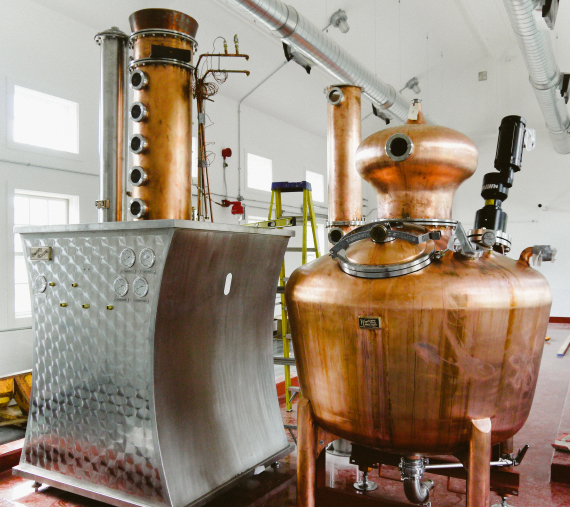 A perfect craft spirit is not easy to come by. Finding the balance between changing trends, science, tradition, taste and smell requires a high level of expertise and creativity. Distillers Jamie Oakes and Matt Power of Tamworth Distillery in New Hampshire are no strangers to the process:
A perfect craft spirit is not easy to come by. Finding the balance between changing trends, science, tradition, taste and smell requires a high level of expertise and creativity. Distillers Jamie Oakes and Matt Power of Tamworth Distillery in New Hampshire are no strangers to the process:
Written by Jamie Oakes and Matt Power – Distillers at Tamworth Distilling
The craft spirit community is an inspiring and wild place. From the local farmers, who want you to infuse their perfect beet into vodka, to the far-away mixologist who strives to craft an exceptional libation from a simple flavor, I am reminded everyday how much goes in to creating an intriguing spirit. The recent growth of distilling as a traditional process into a burgeoning industry embracing change owes much thanks to the microbrewing boom that paved the way. In turn, craft distillers have found an eager audience that demands products that are tasty, inventive, and responsibly made. It’s from this intersection of old and new that Tamworth Distilling operates, and, for those of us on the production floor, it’s where both the fun and the hard work can really take shape.
Our facility is primarily a Test Kitchen for new products that reflect our New England landscape. During development, we are constantly teasing good flavors from the bad — sometimes in bizarre ways and sometimes through the use of unusual equipment. That one path opens to encompass a huge territory as we turn interesting plants into products. The fun part is targeting a specific plant or flavor that we want to use and getting to know it intimately. However, an enormous amount of work can go into this process, and harnessing a particular flavor into a large number of bottles can be challenging and very tedious. This task consistently tests our problem solving skills as we apply them to agriculture, chemistry, engineering, design, and so much more. Fortunately we do this in a beautiful place, and making spirits consistently bring us together with great people and an unbelievable tradition.
Each area of the distillation process is rich in time honored practices and technological understanding. It’s easy to think of these areas as embracing a sort of liquid history. Each piece links past and present processes across cultures in a fluid way to educate a distiller how everyone uses the tools of the trade. Scent sensory can trigger some of the most rooted memories. Distilling rests on the smell and taste of flavor compounds that make up all spirits. That makes our job something of a playground. In the past, a culmination of these tools lead to the discovery that freshly distilled spirits have an elegant way of co-mingling and maturing inside a piece of common technology: the oak barrel. This discovery came to define whiskeys, cognacs, calvados and other aged spirits – ultimately revolutionizing an entire industry. It is truly remarkable to slow down and nurture these traditions during modern times.
It is a very lucky thing to be in the company of extremely creative and thoughtful people, and to peruse an endeavor that has so many possibilities. The wonder and conversations provoked by these folks in the craft community really proves that the depth of the booze industry has yet to be plumbed. The collaboration and resourcefulness assure us of one thing: We know our spirits will never be low.

